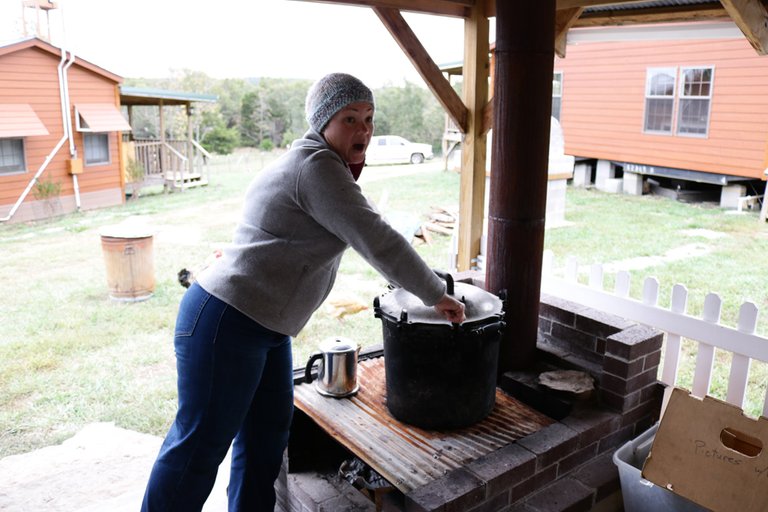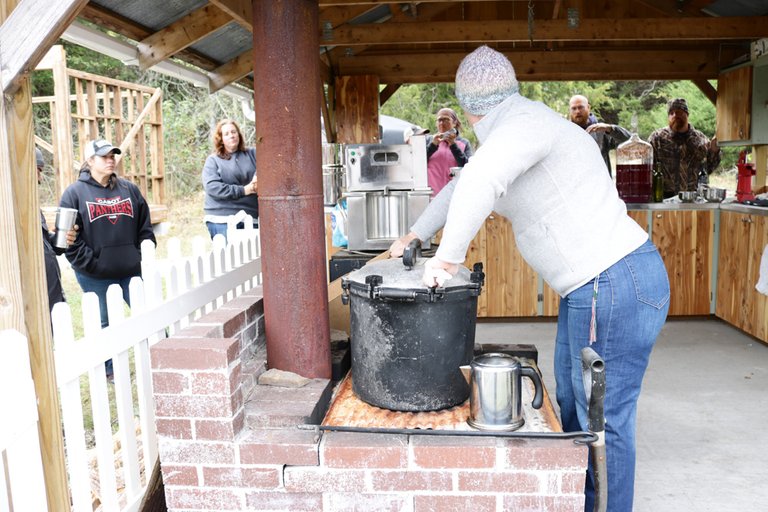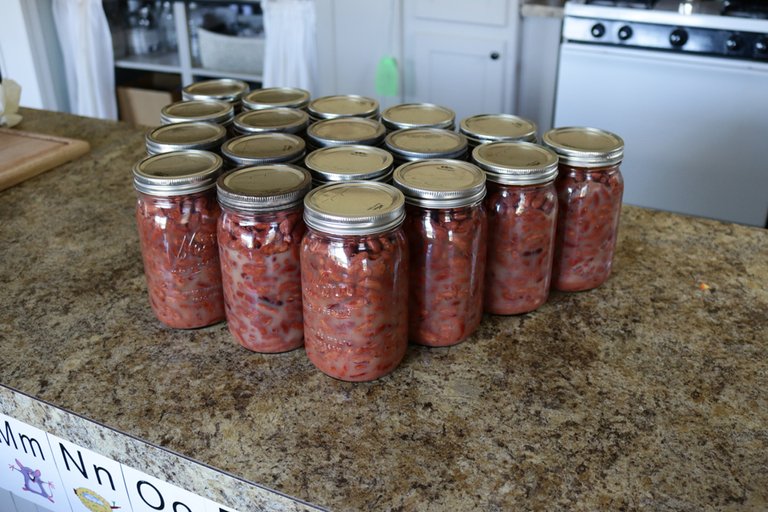
This past week we had about 100 guests over at An American Homestead for our fall feast. Among the classes and demonstrations that we set up was a short class on canning. Jaimie had some red kidney beans that she wanted to can for the pantry and some guests wanted to see how we accomplished this task over a wood fire.
Wood Fire Canning
Many people pressure can with propane or other fuels. But with canned goods so cheap at the store, you're really not experiencing any cost savings at that point. And what if propane or other fuels were no longer available to you? Could you can your own produce over a wood fire? We have been canning our goods this way for over 4 years now. It just takes a little practice.
STEP 1
Soak your beans. Jaimie soaks the beans over night and this helps to remove enzymes within the bean that cause gasing. (NOTE: If you stove top cook your beans, try to avoid using hard well water if you live off grid. It's always recommended to use soft water or rain water for cooking beans on a stove top. Using hard water from a well will result in a tougher bean.)
We use our smaller All American Canner to soak the beans overnight. They are then placed into quart jars and then placed into the the larger canner.

STEP 2
Place your soaked beans into jars at room temperature. You will want to bring everything up to temperature all at the same time. Jaimie then places her quart jars in the canner and then tightens down the lid. There is no fire yet. Everything is at normal surrounding temperature.

The class looks on as Jaimie tightens the lid to the canner. By starting the fire after everything is locked inside, you will bring everything up to temp evenly. It's just easier to start the fire after everything is loaded.

Once the canner is locked and loaded, we can start the fire and that will evenly bring up the temperature inside the jars. We use a lot of cedar wood outside for the canner as it burns fast and hot. It will quickly bring up the temps to boiling inside the canner. Soon the regulator weight is placed on the canner and within minutes, it begins to vibrate from the escaping steam.
STEP 3
Monitor your heat and regulator. Make sure your pressure gauge stays at its proper level. For us and our elevation, the gauge must stay at 15 PSI for 90 minutes. We regulate the wood fire with a sheet of metal. When the gauge moves above 15 PSI, we insert the metal sheet over the fire below the canner and this blocks the heat and the pressure inside the canner comes down. Pressure canning require constant oversight until it's complete.
Don't Open It YET!
Once the time has expired for your batch, shut down the fire by pouring water on the fire or just letting it die out. If you are doing this in winter, DO NOT OPEN YOUR CANNER. Even after the pressure comes down to zero, we never open our canner until the next morning if we are canning during cold temps in the spring, winter or fall. Opening the canner and bringing hot jars into the cold outside temps will usually crack the jars and all your hard work will be lost.
Let the canner sit overnight and open it in the morning.
ALL DONE!
Beautiful quart jars of red kidney beans are ready for storage and use in our meals.

I hope you enjoyed the post. Here is a quick video of us talking about the beans and even some wine we were tasting that day.

Visit Us Online: http://AnAmericanHomestead.com



Shared to twitter!
THANKS!
Thanks SO much Jaimie for hosting that class! The concept of pressure canning over a fire seemed so complex, but seeing it in person made me realize that it's really not that much different. As an experienced canner, I think it would be something I could manage.
So glad you enjoyed it!!
I absolutely loved this class! I cannot wait to try it myself as I believe this is a valuable skill. Thank you so much for taking time to teach us, Jaimie!
Let us know when you do your first batch!
Definitely!
Everyone should know how to can produce. A vital skill.
Totally true!
Beep! Beep! This humvee will be patrolling by and assisting new veterans, retirees, and military members here on steemit. @shadow3scalpel will help by upvoting posts from a list of members maintained by @chairborne and responding to any questions replied to this comment.
1 Battalion 6th Infantry Reg. DOGS OF WAR!
Really cannot wait until our garden produces and we can start preserving! To do this over a fire would be so much better than always doing inside the house, especially during the days of high temperatures. Thank you for sharing!
Kenny
Love this! Did you put water in your beans too?
Thanks for sharing!